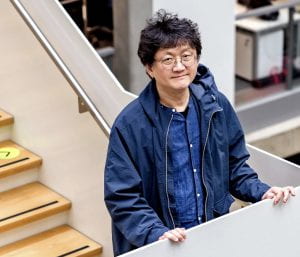Mathematics for Humanity – Math Making the World a Better Place
Minhyong Kim rejects being called an optimist, but he sounds an awful lot like one. “If we take reality exactly as it is, I don’t think we have any real grounds for pessimism,” he said in a recent conversation.
That outlook is behind Mathematics for Humanity, a program Kim recently started that aims to apply mathematics to perhaps the most ambitious possible challenge: making the world a better place.
 For Kim, 59, it’s the next turn in a career that has always maintained an outward gaze. As a mathematician, he’s worked at the highly abstract intersection of number theory and geometry. Yet he’s often looked outside the field for inspiration. In particular, he has embraced physical intuition, attempting to draw a precise analogy between millennia-old mathematical problems and ideas from modern physics, as Quanta reported in 2017.
For Kim, 59, it’s the next turn in a career that has always maintained an outward gaze. As a mathematician, he’s worked at the highly abstract intersection of number theory and geometry. Yet he’s often looked outside the field for inspiration. In particular, he has embraced physical intuition, attempting to draw a precise analogy between millennia-old mathematical problems and ideas from modern physics, as Quanta reported in 2017.
At the same time, Kim has published nine books about mathematics for the general public in his native South Korea. Many hit the bestseller list, including his 2018 title The Moment You Need Mathematics. “The motivation there primarily, it was just fun. I just enjoyed doing it,” Kim said.
With Mathematics for Humanity, Kim’s intent is more serious. He’s leading the program as the recently appointed director of the International Center for Mathematical Sciences in Edinburgh, and he’s organized it to encompass several interrelated goals. First, he wants to give grants to mathematicians and scientists who want to apply math to pressing social challenges. Applicants include researchers at the Institute for Mathematics and Democracy in Boston, which seeks to shape public policy through mathematical thinking, and the Vietnam Institute for Advanced Study in Mathematics, which is developing mathematical tools to address climate change.
A second goal is educational. He wants to broaden the history of the field to more accurately reflect the uncertain origins of many foundational ideas. For example, the core of the mathematical canon is popularly assumed to originate in the teachings of white men in ancient Greece. But in fact, much of that knowledge emerged in the vastness of the ancient Greek empire, which included the modern-day Middle East and North Africa. For Kim, this whitewashing pushes away young people who might contribute to mathematics but don’t see it as belonging to them.
Kim’s perspective, broadly, is that more people in math, and more math in the world, can only be a good thing.
